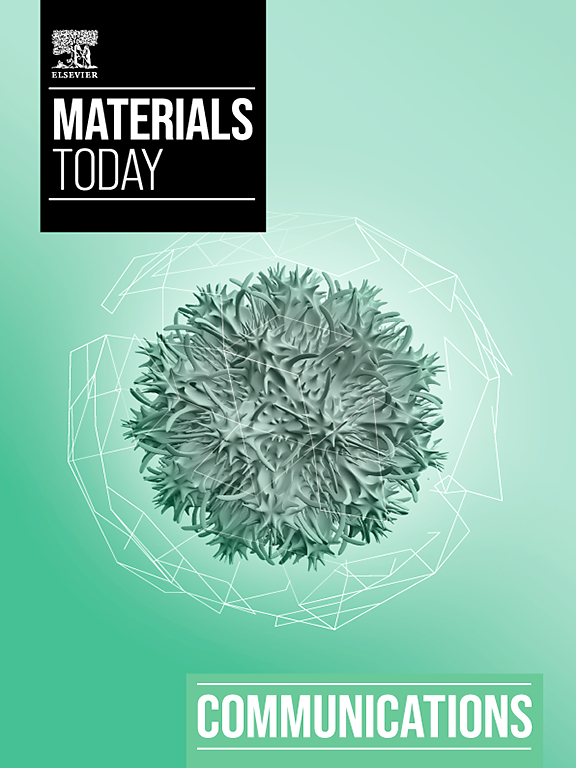Characterization of polycrystalline bulk ferroelectric ZnSnS3 synthesized by hydrothermal method for photovoltaic application
IF 4.5
3区 材料科学
Q2 MATERIALS SCIENCE, MULTIDISCIPLINARY
引用次数: 0
Abstract
ZnSnS, a newly theoretically predicted ferroelectric material which shows promising properties for solar cell and photovoltaic applications, was successfully grown in our laboratory by hydrothermal method. The high intensity x-ray diffraction pattern from the (211), (10), (200), (210), (310), (320), and (32) planes reveal the crystalline character of the trigonal ZnSnS phase. The microstructural property and elemental distribution were evaluated using SEM and TEM studies. Diffuse reflectance measurement at room temperature shows a direct bandgap of 2.62 eV along with a high energy direct transition of 3.13 eV. Two broad photoluminescence peaks at various temperatures (4–300 K) were also detected around (2.61–2.73 eV) and (3.04–3.11 eV). The emission characteristics are explained considering the shallow donor level to valence band transitions. Raman study elucidates that the synthesized ZnSnS possess a good number of Raman active bands. A phase transition from the ferroelectric to non-ferroelectric phase of ZnSnS is observed around 330 °C in DSC and dielectric measurements. The P-E measurement showed that the material is ferroelectric in nature with saturation polarization value of 21.85. The current-voltage characteristics showgood photovoltaic response of the fabricated Ni/ZnSnS/Ni device in the visible range indicating its application in PV devices and photodetector.水热法合成的用于光伏应用的多晶块状铁电体 ZnSnS3 的特性分析
ZnSnS 是一种理论上新预测的铁电材料,在太阳能电池和光伏应用方面具有广阔的应用前景。来自 (211)、(10)、(200)、(210)、(310)、(320) 和 (32) 平面的高强度 X 射线衍射图样揭示了三方 ZnSnS 相的结晶特性。利用 SEM 和 TEM 研究评估了微观结构特性和元素分布。室温下的漫反射测量显示,直接带隙为 2.62 eV,同时存在 3.13 eV 的高能直接转变。在不同温度(4-300 K)下,还检测到两个宽泛的光致发光峰,分别位于(2.61-2.73 eV)和(3.04-3.11 eV)附近。考虑到从浅供体水平到价带的转变,这些发射特性是可以解释的。拉曼研究表明,合成的 ZnSnS 拥有大量的拉曼活性带。在 330 °C 左右的 DSC 和介电测量中,观察到 ZnSnS 从铁电相到非铁电相的相变。P-E 测量显示该材料具有铁电性质,饱和极化值为 21.85。电流-电压特性表明,所制造的 Ni/ZnSnS/Ni 器件在可见光范围内具有良好的光伏响应,这表明它可应用于光伏器件和光电探测器。
本文章由计算机程序翻译,如有差异,请以英文原文为准。
求助全文
约1分钟内获得全文
求助全文
来源期刊

Materials Today Communications
Materials Science-General Materials Science
CiteScore
5.20
自引率
5.30%
发文量
1783
审稿时长
51 days
期刊介绍:
Materials Today Communications is a primary research journal covering all areas of materials science. The journal offers the materials community an innovative, efficient and flexible route for the publication of original research which has not found the right home on first submission.
 求助内容:
求助内容: 应助结果提醒方式:
应助结果提醒方式:


